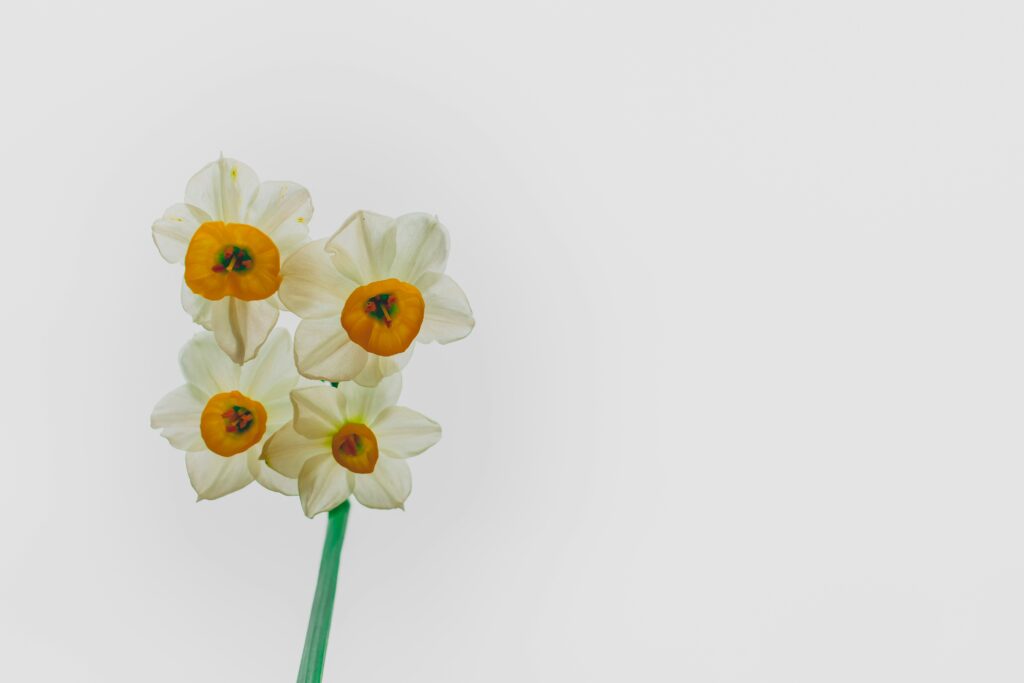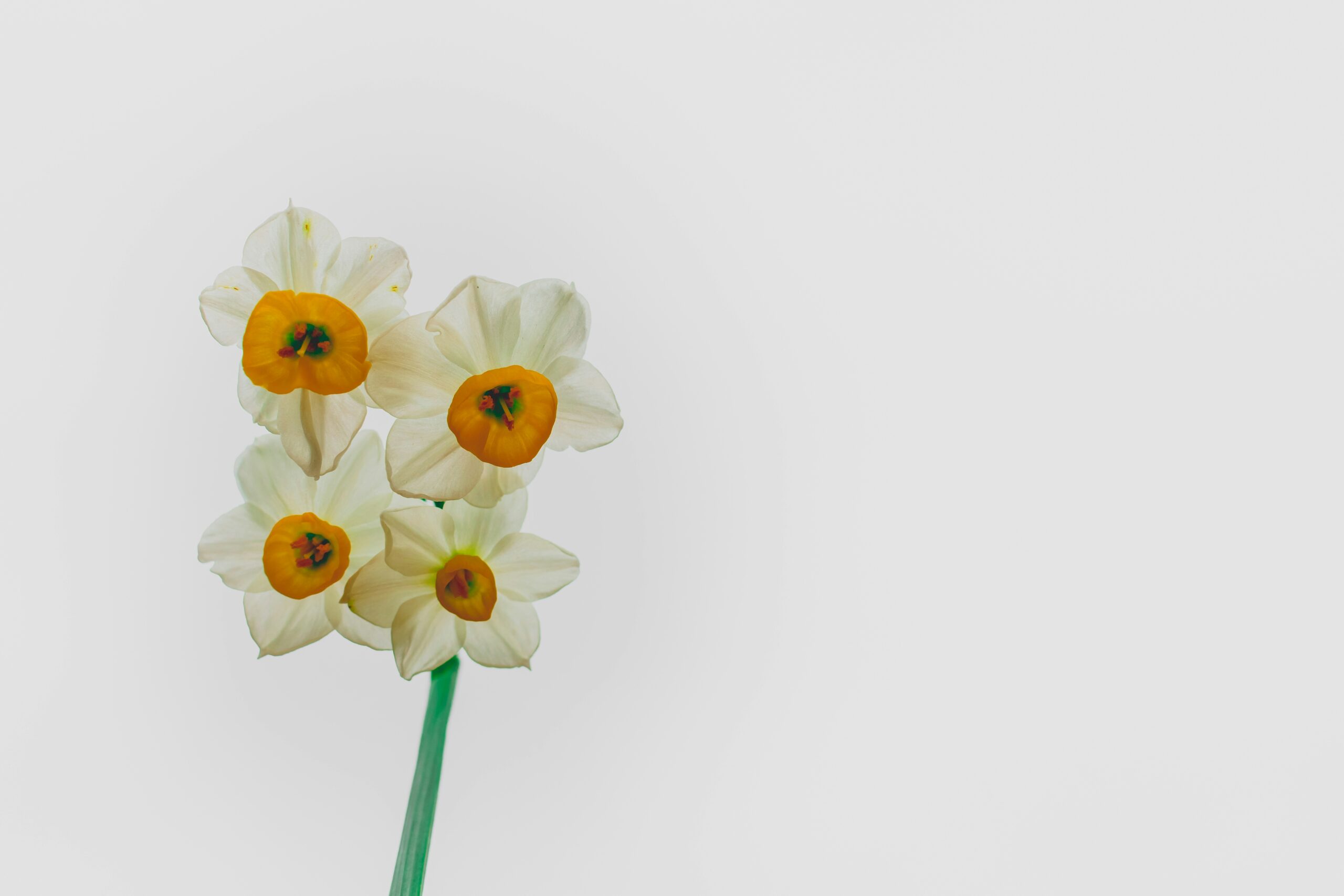七十二候の「金盞香(きんせんかさく)」は、立冬の末候にあたる時期です。この時期になると、水仙の花が咲き始め、その芳しい香りが冬の空気を満たします。
金盞香とは、水仙の別名です。水仙の花は、6枚の花びらの真ん中に黄色い冠のような副花冠があり、その姿がまるで金色の杯(きんせん)に似ていることから、この名がつきました。
水仙の花は、11月半ばから3月頃にかけて咲きます。まだ雪の残る野山の斜面などに、白や黄色などの可憐な花を咲かせることから、「雪中花」という別名もあります。
水仙の花は、その可憐な姿と芳しい香りで、古くから人々に愛されてきました。日本では、江戸時代には「七草粥」の材料として使われていました。また、水仙の花言葉は「純潔」「謙虚」「思い出」などがあり、贈り物としても人気があります。
金盞香は、冬の訪れを告げる季節の花です。その可憐な姿と芳しい香りは、冬の寒さを忘れさせてくれるような、冬の妖精のような存在です。

Title: Narcissus (kinsenkasaku) ~The Winter Fairy~
The seventy-two terms “Narcissus (kinsenkasaku)” is the last term of Risshun. At this time, daffodils begin to bloom, and their fragrant scent fills the winter air.
Narcissus is another name for daffodils. The daffodil flower has six petals in the middle of a yellow crown-like corona, which is named after its resemblance to a golden cup (kinsen).
Daffodils bloom from mid-November to March. They bloom delicate white or yellow flowers on the slopes of the mountains where snow still remains, also known as “snow flowers.”
Daffodils have been loved by people since ancient times for their delicate appearance and fragrant scent. In Japan, they were used as an ingredient for “nanakusa-gayu” (seven-herb rice porridge) in the Edo period. Daffodils also have flower meanings such as “purity,” “humility,” and “memories,” and are popular as gifts.
Narcissus is a flower that heralds the arrival of winter. Its delicate appearance and fragrant scent are like a winter fairy that makes you forget the cold of winter.

コメント